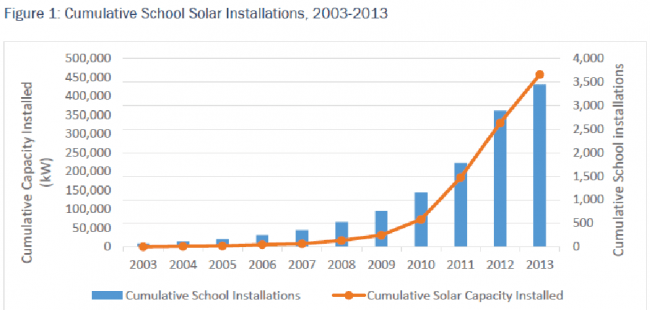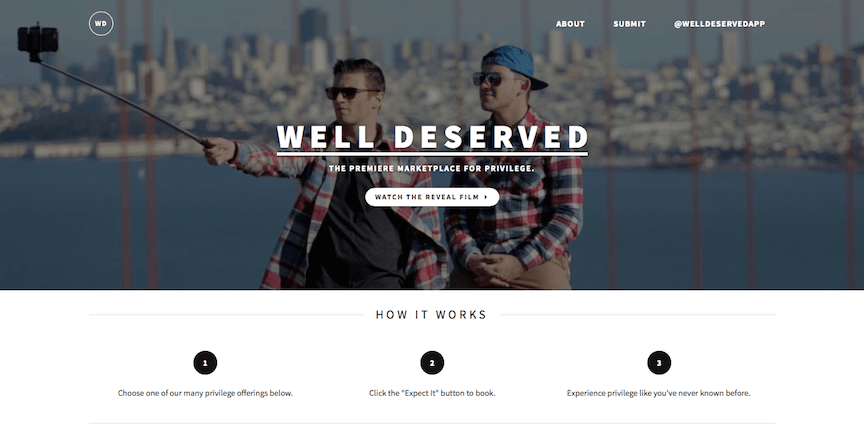What's Behind the Boom in Women Entrepreneurs?


There are now 8.3 million women-owned businesses in the United States. Together they employ more people than McDonald's, IBM and Wal-Mart combined, and their revenue of $1.3 trillion exceeds the market capitalization of Apple, Microsoft, GE, Google and Sony.
What is behind this trend? How have women managed to achieve this success in what has traditionally been a man’s world? Is this something that women are inherently better at, or is it simply part of a larger trend?
As you can imagine, this is a complex subject, and I certainly won’t have all the answers here. Perhaps we can at least put the questions into some kind of perspective.
Part of this can be explained by the intersection of several recent trends. One is the slow, steady gains being made by women in the workforce. Women today represent 14.6 percent of executive officers, including 23 CEOs in the SP 500 (4.6 percent). That’s still a small amount, but it’s much larger than it once was. Yet, these numbers have actually stagnated since 2007, even as women have come to represent 59 percent of the college-educated, entry-level workforce.
At the same time, more people -- male and female -- are leaving what used to be called “regular employment,” many taking advantage of the opportunities being presented by the digital economy. Entrepreneurship in general is on the rise. A full 13 percent of the population was involved in startups in 2012. That is further compounded by the fact that job satisfaction is at an all-time low.
So, as women are increasingly moving toward a sense of fulfillment beyond the home, more are taking to setting up their own shops. But that doesn’t answer the question of whether women are inherently more or less suited to entrepreneurship.
What makes a great entrepreneur
Jenny Ta is the founder and CEO of Sqeeqee (pronounced “Squeaky”), a social networking company that she refers to as “Facebook on steroids.” Sqeeqee offers “SocialNetworthing,” which allows users to monetize the exposure they provide to companies on their social media profiles. Ta spent 18 years working on Wall Street. She left to start her own investment banking firm -- twice. Ta says that entrepreneurship is an individual trait that’s not necessarily associated with gender. For her and others like her, working for someone else, feels “like being in a cage.”
Ta continues, “The other piece is about whether a woman is inclined to be a risk-taker or not. It’s easier to say than to do. I’m the type of entrepreneur that, if I have a million dollars, I would rather put it into a businesses than buy a bunch of condos and rent them. And if I burn the entire million, at least I can say that I gave it a shot. Not everyone is like that. Some people are content. I am not. Risk-takers might achieve the most visibly spectacular successes, though they might not have the most success overall, statistically speaking.
For people like Ta, “It’s like a force deep within your gut. Entrepreneurs have their own vision, and they are motivated to execute that vision. Entrepreneurs will only be content at the top. The minute you reach the peak of that mountain, you see another mountain that’s even higher, and you start thinking about climbing it.”
Elizabeth Schirmer is another breed of entrepreneur. She has a job as a VP of marketing at a biofuels company called Sweetwater Energy in Rochester, New York. Like Ta, she’s not entirely content with that, but she has found a way to make it work. Schirmer has studied self-determination theory and follows its three precepts of Competency, Autonomy and Relatedness as guiding stars. She felt that while her career provided the first two, it was falling short on the third, which challenged her to seek more connectedness and impact. It was out of that concern that she founded the nonprofit Untapped Shores.
Untapped Shores provides an opportunity for travelers to make a difference by carrying and delivering a life-saving business-in-a-box to a woman or a family in need. Their motto is: “Give back as you go.”
In the box is a water purifier to which the user adds salt to produce purified water, plus chlorine as a byproduct. While the purified water is essential for drinking, as well as hydroponic agriculture, the chlorine can be used for various sanitation solutions. The women that receive these kits are also trained in simple business skills to show them how to set up a social enterprise that can produce sustainable income and lift them out of poverty. Some of these women have gone on to franchise their businesses and run workshops of their own.
The women entrepreneurs that benefit from Untapped Shores typically don’t have the option of finding jobs outside the home, nor are they in a position to pay for daycare for their children, or travel to work. So, this type of opportunity is really a perfect fit for them, and it is why entrepreneurship has become a major force in bringing the African economy forward.
Untapped Shores was started with founder seed-money and has continued with contributions from donors large and small. Of course, larger sums are sometimes needed.
The VC funding gap
As Jenny Ta pointed out, in the world of American business, money and power play a big role. This is one area where women entrepreneurs face a unique challenge.
Venture capitalism has been a male-dominated sector. Despite owning nearly 30 percent of U.S. businesses, women attract only 5 percent of the nation's equity capital. When it comes to first-year funding, women receive 80 percent less capital than men.
“VCs often pride themselves on ‘pattern recognition’ and women aren’t in their typical pattern," said Rachel Sheinbein, angel investor, who co-founded and manages Makeda Capital, a fund that invests specifically in public companies with female CEOs.
She spoke of VC meetings she’s attended where female entrepreneurs were presenting. The meetings reminded her of buying her first car: “I went with my male friend who was unemployed, while I was making a very nice chemical engineer’s salary. The salesman didn’t talk to me at all.” That male bias is compounded by the way that women are conditioned to not put themselves forward the way that men more often do.
Clearly, all of that is changing. There are tectonic forces at play that are shaking things up and providing opportunities that hadn’t existed before. New funding models like crowdsourcing can also circumvent the VC logjam.
There is a convergence occurring that is opening more doors: What had once been an existential choice for women -- between pursuing a career, or staying home and raising children -- has now been bridged by new flexible options. Now women can, to a large extent, define their own schedule, communicate asynchronously using email and contribute from almost anywhere. In doing so, they bring highly-valued perspectives into an economy that sorely needs a greater contribution from the feminine point of view.
Image credit: Untapped Shores
Majority of BP Shareholders Vote For Climate Change Resolution


An overwhelming majority (98 percent) of shareholders voted for a resolution on climate change at a BP annual general meeting held on April 16. The resolution requires increased annual reporting on climate change risks. A 75 percent vote was required to make it binding.
The Aiming for A investor coalition led the shareholder resolution. Launched in 2012, Aiming for A is led by charity fund manager CCLA, one of Britain’s largest charity fund managers. The Church of England’s National Investing Bodies are part of the $253.4 billion Aiming for A investor coalition. Over 50 institutions co-filed the shareholder resolution, including eight pension funds with assets over $15 billion.
Is the passing of the resolution really something to cheer?
“I just wanted to welcome Special Resolution 25,” Bob Dudley, group chief executive told shareholders. BP has “consistently advocated for stronger government action and have been open and transparent about our environmental impact,” he said. The company’s challenge is “to make the case for the necessary role of fossil fuels, and further transparency supports that case.”
Making the case for the “necessary role” of fossil fuels like oil and gas does not sound compatible with reducing greenhouse gas emissions. So, is the resolution’s passing by BP shareholders really something to cheer? According to a statement by the Aiming for A coalition, it “sends a strong signal to BP about the importance shareholders place on the company's long-term response to the challenge of transition to a low-carbon economy.” However, not everyone is as excited. A ThinkProgress article points out that while passing the resolution is historic for a major oil and gas company, “the decision is less about addressing the causes and effects of climate change than it is about navigating the new green economy to maximize the company’s profits.”
Perhaps the correct response is the one that Matt Davis, communications director at ShareAction, one of the groups that presented the resolution, offered. “The real question now is the rigor with which BP lives up to its commitment on this stuff,” he told Carbon Brief. In other words, let's watch and see what BP does.
BP not only recognizes that climate change is occurring, but it already puts an internal price on carbon. The company stated in its 2014 Sustainability Report that it assess how potential carbon policies could affect its businesses and applies “a carbon price to our investment decisions, where relevant.” BP also supports governments putting a price on carbon. Specifically, it supports a price on carbon that “treats all carbon equally, whether it comes out of a smokestack or a car exhaust,” which the company believes “will make energy efficiency more attractive and lower-carbon energy sources more competitive.”
Should we just demonize oil and gas companies?
While some climate change activists think we can wean ourselves off the use of fossil fuels tomorrow, the reality is that energy demand is only increasing. BP predicts energy demand will increase by almost 40 percent in the next 20 years, driven mainly by developing countries. Clearly, what is needed is innovation -- and that takes money. BP does invest in energy efficiency technologies and alternative energies.
We have a choice to make. We can choose to demonize oil and gas companies, or we can keep a close eye on their climate change policies and challenge them when needed.
Image credit: Mike Mozart
'Organic Ready' Corn: The Fight to Stop GMO Cross-Pollination


Most of us wouldn't give a second thought about the future of organic corn, especially if we purchase organic products regularly. We go to the store, select our organically-labeled produce, pay for the product and we're on our way. Organic vegetables, fruits and grains are a perennial favorite these days, and what one store may not have, the next will likely stock.
But for biologist Frank Kutka, the future of organic farming isn't that simple, especially when it comes to corn. In fact, its future is anything but secure.
That's because corn is one of those plants that relies on the wind to cross-pollinate and is subject to the drift from other corn fields. Most of us have heard those fantastic stories about organic farmers that have found their rows of organic corn infiltrated by genetically-modified pollen from neighbors' fields. For Kutka, those stories aren't remarkable, they are a reflection of a growing danger to the integrity of the organic corn industry.
"[We’ve] got problems with transgenic contamination of organic corn, both in the seed we buy to grow organically unfortunately, and frequently in the crop as it is sold," Kutka explained. For commercial farmers, that can be a real problem, as transgenic contamination can bar their product from being sold as organic produce, particularly in Europe where mechanisms are often in place to ensure that organic products are really organically grown.
Kutka, who specializes in plant breeding techniques, has made the future of organic corn his life's passion. Most days he can be found in an organically-grown corn patch, either the one on his farm in North Dakota or others that he is helping to found. Or he is on the phone, Facebook or another media helping researchers champion the use of the gametophytic incompatibility 1 trait, or Ga1s for short.
That may sound like a mouthful, but its potential in terms of preserving the integrity of organic corn is huge, says Kutka.
"[Ga1s] came from South American popcorn and has been the savior of the popcorn industry in the USA," Kutka said. "It was successfully employed back in the 1950s and onward to prevent unwanted outcrossing of popcorn with field corn."
Those plants that have matching genes -- or are homozygous -- for Ga1s are unlikely to be affected by drift from non Ga1s plants, even if they are in the next-door field. Field corn, what is commonly grown in the U.S., doesn't carry the Ga1s trait, said Kutka, so the Ga1s gene "is very good, strong protection and reduces unwanted outcrop." Kutka's own version of corn carrying this trait is called Organic Ready corn, a lighthearted reference to Monsanto's genetically-modified Roundup Ready product.
Kutka is not the first researcher to delve into this kind of exhaustive research on corn. Dr. Tom Hoegemeyer at the Department of Agronomy and Horticulture at the University of Nebraska successfully bred a line of Ga1 homozygous corn in the 1990s and coined it Puramaize. The patent on this unique version is now owned by Cerrado Natural Systems Group and is limited only to use in yellow dent corn, a type of corn that is commonly found here in the U.S. The patented line is now being promoted for commercial farming by Blue River Hybrid Organic Seed in Iowa.
Kutka said he started his research on Organic Ready to ensure that farmers of all sizes, whether part-time hobbyists, or large-scale commercial farmers, could access organic corn seed that would be resistant to GMO cross-pollination.
"I wanted to get into it to make sure that the trait was available to people without patent, so without having to pay expensive seed fees. So, I wanted to make sure the trait got into some open pollinated corn," said Kutka, who noted that apart from Hoegemeyer's accomplishments, there appears to have been very little work in this area in the past. "I also wanted to make sure it got into some breeding lines so that those making hybrids could get going,"
Despite the slow start, the concept of breeding incompatibility traits into organic corn is finally beginning to gain steam, Kutka said. The Breeding and Genetics Department at North Carolina State University, headed by Dr. Major Goodman, has taken up the challenge, as have a number of breeders in Georgia, Florida and Chile, who are working with Kutka on this endeavor. The true mark of the success of his project is being able to breed the trait in as many environments as possible, a task that takes time, legwork and a lot of patience with the elements.
"Imagine if one of your varieties of corn flowers and the other doesn’t right away," he explained. Climate, or just the fickleness of Mother Nature during a particular season, may yield those unexpected results, but they can have a decisive effect on that year's product if cross-pollination doesn't occur. "Well [then] I can’t make that cross, and if it just completely fails that year, that whole program just lost a season." Ouch.
"Luckily it is a multi-faceted project and so I am having multiple successes and multiple not-quite-there-yets," Kutka said.
And yes, climate change may be an issue, said Kutka, who expressed some concern about what warming temps may bring to his efforts.
"There are certainly concerns around corn: What is it that is coming, and should we be trying to get ahead for diseases and pests that exist in the south because they may soon move north?" They are questions that have also added some urgency to his work.
Both Kutka and the owners of Blue River stress that Ga1s breeding is not a form of genetic modification, but rather a breeding mechanism that relies on nature's own defense mechanisms in certain types of corn. Still, Kutka said he's used to the odd look from people who haven't heard of his project.
"It is not unusual to get some eyebrows raised when you mention corn genetics at all. And when you use strange words and talk about genes and traits, these have come to take on a meaning that isn't the original meaning." He is often asked whether this is GMO. "I say, no, this is natural corn breeding and naturally existing corn traits," an answer that isn't always understood.
Still, Kutka's efforts are growing. The Organic Ready project has received funding from the Organic Farming Research Foundation, and support from a number of educational institutions and non-governmental organizations that have seen merit in his project. He's received inquiries as far away as Argentina and Poland, as well as offers from a U.S.-based farming organization to help with the project. He is also gaining the attention of organic farming advocates who recognize that organic field corn's most intrinsic trait -- its ability to be easily pollinated in the wind -- may one day make it an endangered species without Ga1s breeding.
"Corn is a very useful plant and valuable plant in organic agriculture. And we need to keep it in organic agriculture," Kutka said. "This trait, along with our other tools for reducing unwanted outcrossing, can help us do that if we learn how to use them and then employ them."
If there is any lesson to be learned from Kutka's successes thus far, it may be the power in conventional breeding methods that often seem dwarfed by today's technology, but have been in existence for at least two centuries. It will be interesting to see how the Organic Ready line develops in coming years and whether this nascent movement can save the future of organic corn.
Image credits: Frank Kutka
Solar is Getting Weird


The California solar homeowners I work with are acting pretty “weird” compared to the rest of America. This summer when the rest of America will keep their thermostats set at higher-than-desired levels to avoid the dreaded high monthly electric bill, the solar customers I know will be running their homes at a pleasant 72 degrees with no fear of receiving a huge electric utility bill.
In fact, many of them love solar electricity so much they are pulling out their gas appliances and re-engineering their homes to be totally electric. These homeowners are really out of step with their fellow Americans in terms of leasing electric cars that they fuel “for free” from their solar systems. Is this the real future for Earth Day or just more California weirdness?
Public policy issues when solar is price-competitive in all states
Deutsche Bank predicts that solar electricity will achieve grid price parity in all 50 states by 2016. My experience with leading solar companies is that their business goal is nothing less than squeezing every nickel possible out of the cost of solar to enable prices that are lower than the retail prices of electric utilities across America. Achieving this goal will be a sea-changing (and weird) moment in history that will generate grassroots political pressure for questioning utility rules and rate designs that can inhibit installing solar at homes and businesses.This type of public policy questioning took place in California over the last decade. The resulting change in public policy has enabled California homeowners and businesses to easily and economically net meter their solar power against their utility bill. California’s public policy also allows third-party financing of solar systems. This policy has sparked highly competitive lease and power purchase offers to homeowners with zero down for the installations of a system, plus a guarantee that the homeowner's monthly solar bill will be lower than their historical monthly electric utility bill.
California homeowners that buy their solar system, rather than financing through a lease or power purchase agreement, can use the Federal Investment Tax Credit to cut their incomes taxes (utilities are afforded these same tax credits). The tax credit plus the cost savings of the solar system combine to achieve solar prices of 10 cents or less price per kilowatt-hour levelized over 20 years. Financial research suggests that a homeowner investing in a solar system will earn more on their solar system than if they invested their money in the S&P500!
How cheaper solar power is making people act weird
What I have found fascinating is how California’s solar homeowners are reacting to being freed from the fear of receiving a high monthly electric bill and anticipated utility rate increases. Beyond their restored joy of being able to run their air conditioners when it is hot outside without fear of a budget-crushing bill, they often use their monthly electricity savings to pay the monthly lease on an electric car. (Free car!) They plug their EV into their home’s net metering solar system to recharge the car for the next day’s use. (Free and clean fuel!) The economics of homeowner solar power is a major reason why half of all electric cars sold in America are sold in California.
Solar marketing is weird and coming to America!
The Shelton Group has done pioneering work on how to successfully market a sustainable product. They found that you CANNOT convince a consumer to implement a sustainable behavioral change by doing these two things:- You can’t educate them into it
- You can’t trick them into it.
What will impact consumer behavior is a “wake them up” message or signal that stuns them into realizing that their unsustainable behavior is actually weird or not normal. Nothing gets a consumer’s attention more than a truly breakthrough price! It is solar’s breakthrough pricing that has been the “wake them up” motivation for California homeowners and businesses to go solar.
Driven by solar’s lower prices, the marketing of solar in California is now definitely getting weird. TV advertisements by many California solar companies look and sound like a Tea Party convention, with speakers rallying a crowd of people to gain financial freedom from high utility rates. Solar companies are also using peer marketing strategies. One solar company’s TV ads show neighborhood kids playing at the solar-powered home because the air conditioning is running on a hot day. The latent marketing message is the pride gained by the solar-powered mom that her children are now more popular. Get ready America! When solar prices in your state drop below your electric utility’s retail prices, you will be getting this “weird” solar marketing too.
A lower cost means a more sustainable economy
Since 2007 my research has pointed to a green economic revolution where economic growth will be driven by products that costs less plus mean more in terms of human and environmental health. Rooftop solar’s ability to deliver both lower prices plus zero onsite emissions is just one example of this emerging sustainable economy. Another example is how healthy food sales are growing at three times the sales rate of conventional foods as consumers increasingly search for “mean more” food solutions and as the price for organic foods narrow the price gap with conventional foods. Sustainable economics is also sweeping through corporate America as companies from Apple to Walmart adopt sustainable best practices (including installation of solar power) as a core business path for reducing costs and winning millennial generation customers.Sustainable economy is driving job growth
This sustainable economy has the potential to generate local jobs without stimulation from the Federal Reserve’s unsustainable monetary policies of almost zero interest rates. Today there are approximately 175,000 solar jobs in America. These jobs are spread across the U.S. pumping more than $15 billion annually into the American economy.
The solar industry is adding jobs at a time of massive layoffs in the fossil fuel industry. The solar industry now employees almost twice as many people as the coal-mining industry. Since 2014, the solar industry has added twice as many jobs than the oil and natural gas pipeline industry.
Importantly, solar jobs are local jobs. A worker can get a job working in the solar industry near where they live rather than having to uproot their life to work in the Bakken oil fields of North Dakota or a deep-sea oil platform in the Gulf of Mexico.
Weird is the path to sustainable economic growth
The bottom line for America’s economy is that sustainability has grown into a global multi-trillion dollar annual business opportunity. Sustainability is a growth industry that holds the potential for restoring American jobs, the economy and the environment. As demonstrated by the solar industry, a sustainable economy will deliver lower consumer prices, fewer emissions and increased numbers of local jobs. The American path to sustained economic growth is to get weird like the growing numbers of homeowners going solar.
Image credit: Flickr/Patrick Strandberg
Why Gender Matters to Investors


Editor’s Note: This article originally appeared in the April 2015 issue of Green Money Journal on “Women and Investing.” Read more excerpts here.
By Joseph F. Keefe and Sallie L. Krawcheck
The business case for gender diversity is now well documented. The research is compelling: When women are at the table – and better yet, in leadership positions – companies simply perform better.
A 2014 Credit Suisse study of 3,000 companies assessing the level of women in senior management found that more diversity in management coincides with better corporate performance and higher stock-market valuations. A 2014 Thomson Reuters report concluded that, on average, companies with no women on their boards underperformed relative to gender-diverse boards and had slightly higher tracking errors, indicating potentially more risk. A 2012 Credit Suisse report found that companies with women directors outperformed those without women directors in return on equity, average growth and price/book value multiples. A Catalyst study found that companies with three or more women directors outperformed those with no women directors as measured by return on equity, return on sales and return on invested capital, while McKinsey found that more diverse management teams deliver higher returns for shareholders across industries.
Women bring diverse perspectives to the table; their leadership style can drive more innovation and collaboration; they are more likely to ask tough questions; and they often take a different approach to risk. It’s not that women or men are “better” but that diverse groups — where both men and women are at the table — make better decisions than non-diverse groups. Indeed, the research suggests that where gender diversity reaches a critical mass of three or more women on a board (roughly 30 percent), governance improves and so does financial performance.
With the business case for advancing women so clearly documented, the case for investing in companies that are leaders in promoting gender diversity has likewise become self-evident. Moreover, as the investment case strengthens, the risks of not investing in women are becoming apparent as well. Businesses that fail to embrace gender diversity on their boards and in upper management limit their own ability to grow and place their shareholders at a disadvantage.
Yet despite the powerful business case for women’s advancement, gender inequality stubbornly persists. Today only 12 percent of board seats and 11 percent of senior management positions globally are held by women.
How do we change this? And how do we respond to the growing demand among investors to be a part of this change?
A recent Center for Talent Innovation report found that 90 percent of women said that “making a positive impact on society” is important to them, and 77 percent said they want to invest in companies with diversity in leadership. Clearly, women want to invest in companies that advance women and produce other positive societal outcomes. They want their investment dollars to be part of the solution, not part of the problem.
We also need to be listening more to the “power of the purse,” and recognizing the powerful economic force that women represent. Women control 27 percent of the world’s wealth. They are the breadwinners or co-breadwinners in two-thirds of American households. In the U.S. alone, women exercise decision-making control over $11.2 trillion – that’s a whopping 39 percent of the nation’s estimated $28.6 trillion of investable assets. They are already responsible for 83 percent of all consumer purchases; they hold 89 percent of U.S. bank accounts and 51 percent of all personal wealth. As Newsweek reported in 2010, “women are the biggest emerging market in the history of the planet.”
Our companies, Pax World and Ellevate Asset Management, have joined together to offer investment strategies that are responsive to these trends.
Ellevate Asset Management was formed to direct investor capital to companies that actively embrace gender diversity. It is owned by one of us (Sallie), who also owns Ellevate Network (formerly 85 Broads), the global professional women’s network, which provides women with networking and educational tools that can be important to their success. Pax World has long been a leader in sustainable investing, and in particular, in investing with a gender lens and engaging companies to increase gender diversity and advance women’s leadership.
In our view, investors are a key constituency for promoting gender diversity in publicly-traded companies. After all, it is shareholders who own these companies, and corporate boards are in place to represent the shareholders. If diverse leadership teams perform better than non-diverse leadership teams, then it is in the shareholders’ interest -- and it is the board’s duty -- to promote greater gender diversity in company management and on corporate boards.
What investors can do to promote gender diversity
There are a few basic steps investors and their financial advisors can take, first, to promote gender diversity on corporate boards and, second, to invest in companies that are advancing women.
Regarding board diversity, investors actually have the opportunity to say “no” to all-male corporate boards each and every year when companies send out shareholder proxies in advance of their annual general meetings. Although most investors don’t vote their proxies directly, they can take steps to assure that whoever does vote their proxies — be it their financial adviser, mutual fund or retirement fund — withholds support from all-male boards.
Since 2010, Pax World has voted against or withheld support for director nominees at more than 800 companies due to insufficient gender diversity and has then registered its concern by writing letters to the companies explaining its votes. Many sustainable investing firms like Pax World take a similar stance, and more investors are joining this effort. If you agree that women should be better represented in corporate boardrooms, but your proxies are still rubber-stamping all-male corporate boards, you have the opportunity to stop being part of the problem and start being part of the solution.
Just as importantly, investors now have the option of investing in companies that have embraced gender diversity on their boards as well as in executive management. That’s why we launched the Pax Ellevate Global Women’s Index Fund (PXWEX), which invests in the highest-rated companies in the world for advancing women. Companies are ranked based on representation by women on their boards and in executive management, as well as other indicia of gender leadership.
One hundred percent of the companies in the Pax Ellevate Global Women’s Index Fund have a woman on their board while 99 percent have two or more women.
Significantly, evidence shows that when women’s representation on boards reaches a “critical mass” of three or more women — or 30 percent of an average-size board — governance improves and companies perform better. Women hold 32 percent of the board seats of companies in the Pax Ellevate Global Women’s Index Fund (versus a global average of 12 percent), and 73 percent of the companies in the fund have three or more women on their board (versus 13 percent globally). Further, 25 percent of executive management positions of companies in the fund are held by women (versus a global average of 11 percent). Investors now have the opportunity to invest in these “critical mass” companies.
Investors, in other words, now have a choice. If you believe, as we do, that gender equality matters, you can now put your money to work doing something about it.
Joseph F. Keefe is CEO of Pax Ellevate Management LLC. and President and CEO of Pax World Funds.
Sallie L. Krawcheck is Chair of Pax Ellevate Management LLC. and Chair of the Ellevate Network, a gobal professional women's organization with over 34,000 members.
Read their full biographies as well as article notes here.
Career Reentry Programs Offer Solid Chances for Returnees


Going back to work. It's not something anyone does just like that. Especially not after having been away from the office, conference calls and colleagues for many years. There are a number of reasons why professionals decide to quit their jobs and leave the workplace altogether. Most commonly known are parenthood, having to look after close relatives and traveling the world. Sometimes people quit for temporary health reasons, a drastic career change even, switching to far less demanding tasks.
But what to do when the kids are grown, the relatives in a better place and the passport loaded with exotic stamps? What if your drive and ambition tell you to seek new challenges? Will you welcome that little voice that says, "I want to go back to work" without a doubt? Without wondering if you're still qualified enough? And most importantly, will there be a satisfying job for you to return to in a highly competitive economy?
From the moment you decide you want to go back to work, your mind will be filled with questions. And depending on your personality and circumstances, you can feel excited, eager or hesitant, afraid, and insecure. You'll have to brush up on your knowledge, skills and expertise levels. How are you going to do that? And where?
The bad news is: Looking for work is a job in itself. It takes a lot of time and focus, and a stomach to accept rejection. Because it's tough out there. In our society, technology advances at a rapid pace, as do the means of communications we use. If you've been out of the corporate workforce for a decade or just two years, you can be sure there's a lot to catch up on. Don't let it discourage you.
Social media, nowadays, is as important for work-related activity as it is for recreational purpose. Our smartphones aren't just called smart because of their looks and design. They are capable of functioning as our very own compact mobile offices, complete with file cabinets in a digital basement and communication apps catering to the needs of full-staff board meetings wherever we are. Various options for immediate exchange of information and data can really be a game changer. So, apart from all these exterior elements that come with the new territory, there's the intrinsic values to reckon with.
And that's where the good news comes into play. You don't have to face this challenge alone. The corporate climate is gradually adapting to demands that meet a more sustainable outlook when it comes to handling human resources. For higher educated professionals who want to return to the workplace, programs are available to offer guidelines, feedback and most of the time even a fair chance to get hired. Some programs are developed by corporate firms, others have their roots in educational systems.
Stanford GSB as well as the renowned women-only Wellesley college, recommend the services of iRelaunch, a successful career reentry resource co-founded by Carol Fishman Cohen, a Harvard Business School graduate. She returned to work after having spent 11 years at home raising four children. Cohen recognized the gap between employers and returnees and decided to design a format that would accommodate a wide range of support for all parties involved. Returning professionals, from both genders, are no longer isolated and can now attend group meetings for advice, strategies and a listening ear.
Such career reentry programs have been developed to benefit integration in a financial and legal work environment, but it's not just the corporate world that's interested in offering opportunities for returnees. Ten years ago, the American Academy of Pediatrics Division of Workforce launched its own Reentry Project to provide assistance for organizations as well as individual physicians.
You can't map out everything in life, but it won't hurt to think ahead once the decision is made to stop working for a while.
Networking is a vital ingredient in the work environment and an activity that doesn't necessarily have to be abandoned. To occasionally work as a volunteer also bodes well for any future reentry, and it keeps people involved. Learn new skills or enhance the present ones, especially when it concerns parenting. The power of parenthood should not be underestimated, for being a parent can reveal unsuspected qualities such as resilience, tenacity and patience, to name just a few. Traveling and meeting new people, getting to know different cultures broadens a sense of the world and your own perspective. Everything you experience outside of the workplace can actually contribute to a successful reentry later on, whether that will be full-time or part-time.
Image credits: 1)Flickr/Georgie Pauwels - Long Stairs 2) PixaBay/Unsplash
Twitter Chat RECAP: #LivingProgress w/ HP’s Chief Progress Officer


Today, Gabi Zedlmayer, Chief Progress Officer for HP, joined TriplePundit for a special Twitter Chat about HP Living Progress and Earth Day 2015 - at #LivingProgress.
Climate change is one of the most urgent and difficult problems facing our society today. The toll it is having on people, the economy and the planet cannot be ignored.
On the eve of Earth Day 2015, HP Chief Progress Officer Gabi Zedlmayer joined TriplePundit’s Nick Aster for a candid chat about the challenges climate change poses for people, the economy and environment. The two discussed what one of the world’s largest IT companies is doing to not only reduce its own impact, but also to help others lower their emissions and fundamentally transform how the world works.
Recently recognized as one of the 50 most influential women in European tech, Gabi Zedlmayer is a passionate, visionary leader who knows what the power of creative thinking and technology can do to transform lives, energize businesses and empower communities. She sees it every day as she does what she calls “the best job in the company.” As Chief Progress Officer, Gabi is responsible for ensuring HP Living Progress, which is the company’s framework for thinking about how it does business, is embodied throughout the company and brought to life through action and innovation.
TriplePundit and HP have held two previous Twitter Chats on Living Progress - live from Sustainable Brands 2014 and SXSW Eco 2014. On April 21, Gabi shared what has been unfolding at HP over the past several months as the company prepares to separate into two Fortune 50 companies later this year. A few topics on the docket were:
- How product development innovations at HP are specifically addressing greenhouse gas emissions
- The significance of Earth Day at HP -- and what the company is doing new for the celebration this year
- How HP is working to reduce greenhouse gases across its entire value chain
- Progress on rainforest protection through an innovative partnership with Conservation International
Here's the full Storify recap:
FEATURED GUEST:
- Gabi Zedlmayer (@GabiZed) -- Chief Progress Officer at HP
- Nick Aster (@NickAster) -- TriplePundit Founder and Publisher
- Marissa Rosen (@MarissaR1) -- TriplePundit Director of Social Media
- Mary Mazzoni (@Mary_Mazzoni) -- TriplePundit Senior Editor
New York State College's 'Field of Dreams' Goes Solar


Supportive government policy frameworks in “sunny” New England and Mid-Atlantic states such as Massachusetts, Vermont, New York and New Jersey have led to booming demand for and installations of solar photovoltaic (PV) energy systems. The Northeast's regional solar boom has led residential, commercial and utility-scale PV project developers from the West Coast to head east.
And as is true in California, colleges and universities are leading adopters of solar PV and other clean, renewable energy systems. On April 17, Houghton College cut the ribbon and celebrated bringing the largest solar PV system on a New York State college campus online.
Installed by San Diego-based Borrego Solar, Houghton College's 2.5 megawatt PV system will meet over half the college's electricity needs, significantly reduce energy costs and “have a long-lasting positive environmental impact,” the college highlighted in a news report.
Over 3 million kilowatt-hours of renewable electricity per year
Projected to produce 3.15 million kilowatt-hours of renewable energy a year, the on-site PV system is expected to reduce Houghton College's greenhouse gas emissions by 23 percent during its first year of operations. Estimated savings on electricity costs are projected to total as much as $4.3 million over the life of the college's 25-year power purchase agreement (PPA).
Located in western New York 65 miles from Buffalo and Rochester, Houghton provides some 1,000 students a liberal arts education grounded in Christian values. Local and state government leaders, along with university officials, students and executives from Borrego Solar, General Energy Solutions and WGL Energy, attended the commissioning ceremony, which took place at Houghton College's Field of Dreams.
“The solar project reflects both Houghton College's commitment to renewable energy and our commitment to form creative partnerships for the greater good of our region,” said Shirley Mullen, president of Houghton College.
Commented Borrego Solar Senior Project Developer Amy McDonough: “With this solar installation, Houghton College has taken a leadership role in sustainability in the education space.
“We commend Houghton for working with Borrego Solar, WGL Energy and General Energy Solutions to take advantage of available financing, technology and New York’s net metering policies to secure the long-term economic and environmental benefits that solar can provide for schools statewide.”
Growing solar adoption in U.S. schools
Schools, colleges and universities have been at the leading edge of solar energy adoption across the U.S. Installed PV capacity at U.S. schools has soared over the past decade, doubling every year for the past six years, according to the first nationwide assessment of solar PV adoption in U.S. schools. The report, entitled Brighter Future: A Study on Solar in U.S. Schools, was produced by the Solar Foundation and the Solar Energy Industries Association.
Supportive government energy policy reform has been the key to rapid growing solar PV and renewable energy. New York state is a leader among U.S. states aiming to pave the way for a renewable energy transition during Gov. Andrew Cuomo's time in office.
Financial incentives, fast-track permitting procedures and other measures instituted under the umbrella of the NY-Sun program facilitated Houghton College's PV installation. “This past spring, the State's NY-Sun initiative awarded $46 million for large-scale solar energy projects through the Competitive PV Program administered by the New York State Energy Research and Development Authority,” project partners point out in a joint press release.
“The new solar facility will allow Houghton to replace a significant amount of fossil fuel-generated electricity with renewable energy,” they highlight. “This translates into cleaner air and water, fewer greenhouse gas emissions, and a healthier climate for future generations.
“The installation will offset 2,000 metric tons of CO2 annually, which is the equivalent of taking 421 cars off the road or the amount of carbon sequestered by 1,639 acres of U.S. forests each year.”
*Image credits: 1), 2) Houghton College; 3) TSF-SEIA
Corporate Responsibility is Thriving in Harrisburg


By Daniel Faris
Harrisburg, Pennsylvania, is an unlikely state capitol. Even the people who live here agree that Philadelphia or Pittsburgh might be better choices. Visiting either of those cities immediately imparts a sense of scope and even grandeur — they are alive and vital in a way that Harrisburg, even amidst its slow renaissance, cannot yet match.
While Harrisburg’s suburbs sprawl for miles in each direction, the city center itself is actually not very large. The capitol building sits at the heart of the city, and the downtown area surrounds it; some of the tallest buildings are here, along with the city’s most walkable blocks, classiest restaurants and bistros, and most attractive apartment buildings.
But as you walk away from the capitol building — in any direction, really — the city begins to change around you. As you count the blocks, you’ll find yourself in worse and worse neighborhoods — worse not because of the quality of the people who live there, but because of the radically different socioeconomic factors at work. If income inequality is a problem at work in all of modern America, then Harrisburg could be its poster child.
Maybe it’s existing in a place with such striking differences from one block to another, or maybe it’s just something in the water, but despite Harrisburg’s problems, it has emerged as a hotbed of corporate responsibility.
That renaissance I mentioned earlier? I see it all over Harrisburg. I see it in entrepreneurial boldness, in the empty and forgotten apartments and storefronts being lovingly rehabilitated, and in the local charities that buoy the community’s less privileged. And, unlikely as it seems, it’s the corporate world that’s leading the charge.
Companies that endorse corporate responsibility “have formally-written principles, strive to act as good citizens, and emphasize a constant dialogue with their stakeholders, including employees, suppliers, and communities,” according to the International Chamber of Commerce.
It’s that bit about being a good citizen that really forms the crux of the argument for me. Not every citizen has the means or the time to take an active role in the betterment of their community, and so it falls on companies to take up that banner.
That’s what corporate responsibility means. Now, let’s see how it’s being put into practice by Harrisburg companies.
Shipley Energy
I think it’s an encouraging sign when a company has a page on its website called “Civic Involvement.” It’s even more encouraging when that page takes several seconds to scroll through.
A visit to Shipley Energy’s civic involvement page will yield such names as the Salvation Army, Rotary International and United Way. But those are just the usual suspects; you’ll also find the names of local organizations such as Children’s Home of York and the Susquehanna Folk Music Society. And the list goes on.
It’s great to see any company lend support to national institutions, but it’s even better when a company positions itself as a pillar of their local community.
Pinnacle Health
Though it serves customers all across central Pennsylvania, Pinnacle Health is particularly visible in the Harrisburg area.
A trip to the company's awards page will turn up a list of accolades that reads like a novelette. Most of them are things that you’d expect — or at least hope — to find on a major healthcare company’s website: awards for “excellence in patient care” and being a “Magnet Recognized Hospital,” to name two.
I ordinarily wouldn’t heap accolades on a company for simply doing its job well, but in the healthcare industry this is a particularly important issue. Congress has been wrestling since the late ‘90s about ways to properly, fairly and responsibly provide funds to Medicare. A recent bipartisan solution — the so-called “doc fix” — finally settled the issue by promising merit-based funding. It would hold healthcare providers accountable for the quality of their service.
We happen to live in a world where corporate excellence doesn’t always happen without a federal mandate, so it’s encouraging to see that Pinnacle Health has been consistently ahead of the curve.
Triple Crown
Based in the heart of Harrisburg, Triple Crown has a number of credits to its name when it comes to civic involvement.
The company recently took home bragging rights for two significant achievements. The first was being acknowledged as one of the Best Places to Work in Pennsylvania. As not every company does, Triple Crown has recognized that giving back to the community starts with taking care of your employees. And since the Best Place to Work awards are determined in part by employee votes and testimonials, it seems the company is succeeding.
The second acknowledgement was receiving a certificate of environmental accomplishment from Shred-It, a company that specializes in secure document shredding. The certificate indicates that Triple Crown saved enough paper materials to save 30 trees. Now think what could happen if every company in America made a similar commitment.
Beyond Harrisburg
I’d be remiss if I didn’t look up from the Harrisburg skyline and, at least briefly, touch on the larger world of corporate responsibility.
Regrettably, our world is filled with disingenuous multibillion-dollar corporations that throw the phrase “responsibility” about in a way that damages its very meaning. Take, for example, the hypocrisy all but embedded in the culture of BP — one of the world’s six “supermajor” oil and gas companies. Back in 2010, BP was responsible for the unprecedented Deepwater Horizon explosion and oil spill. Its corporate site will tell you that BP is “working to avoid, minimize, and mitigate environmental impacts wherever we do business.”
Meanwhile, in full view of the watchful public, BP has tried and failed to shrug off its responsibility for the disaster and reduce their enormous fine levied against them in response to the spill.
Elsewhere, though, companies are getting it right. While Apple’s stock and trade is just a little less dicey than shunting oil all across the globe, it is nevertheless embracing the role of thought leader that being a multibillion-dollar corporation brings with it. Under CEO Tim Cook’s stewardship, Apple is making great progress in bringing basic human dignities to workers in the developing world, improving their environmental sustainability back home, and using Tim Cook’s public spotlight — and status as the Fortune 500's first openly gay CEO — to bring attention to the persecution of gay men and women happening on our own shores.
Harrisburg remains the example closest to my heart, but it’s encouraging to watch companies from all over the country embrace corporate responsibility.
Image credit: Flickr/Jim Bowen
Daniel Faris studied journalism at the Writers Institute at Susquehanna University. You can join him at Only Slightly Biased for conversations about politics, The Byte Beat for insight into emerging technology, and New Music Friday for thoughts on progressive music.
This Hilarious Fake App Exploits the Power of Privilege


Silicon Valley is the playground for some of the world’s most innovative minds. This group of mostly straight, white, male 20-somethings have built a multibillion-dollar empire on the back of the sharing economy. Apps like Uber, Lyft and AirBnb have proven themselves to be the way of the future. But the Internet of Sharing Things does not share equally with everyone. This fake app wants to change that.
“We live in a world of excess of privilege,” explained Kasima Tharnpipitchai, one of the project creators. “Privilege goes unused every single day. Unused privilege amounts to over $4 trillion of lost economic opportunity. And those numbers are according to me, right now.”
WellDeserved is the premier marketplace of privilege. From tech privilege to male privilege, this app even lets you monetize your hipster privilege. If you have any race, gender or socio-economic advantage you can exploit, this app is the place to do it.
The winning entry at this year’s Comedy Hack Day in San Francisco, WellDeserved perfectly sums up everything that is wrong with Silicon Valley. As the home to many of the largest high-tech corporations and the most profitable startups in the world, this app draws attention to the clear biases that exist along race and gender lines.
Playing the race (and sex) card
“What’s white, male, straight and occasionally hangs out with Asian guys? Silicon Valley.” An article published in the Guardian last year sheds light on Twitter’s diversity report. They claim that the tech giant’s “geek squad” is unsurprisingly less diverse than the cast of Big Bang Theory.
The report reveals a homogenous industry lacking women and minorities. Although overall 70 percent of Twitter’s employees are male, when it comes to tech that number increases to 90 percent. Only 2 percent of employees describe themselves as black or African-American, and 3 percent as Hispanic or Latino. The reports from Facebook and Google tell a similar story.
The upside is that all three companies have made a commitment to undergo significant changes. “We have a goal to reach every person on the planet,” Twitter said in an article published on its blog last year. “We believe that goal is more attainable with a team that understands and represents different cultures and backgrounds.”
As long as we continue to draw attention to the apparent inequalities in our society, progress can be made. The WellDeserved app uses satire and comedy to do just that. From the dude who charges a black man $5 to hail him a cab, to the guy who walks women home so they can avoid being catcalled, no form of privilege goes unused. If you want to book a particular product or service, just click “expect it,” because that’s how it works.
Poking fun at startup culture
Similar to HBO’s television series, “Silicon Valley,” WellDeserved also pokes fun at startup culture. “The app will not monetize any of the transactions within the community,” Kasima explained. “Our business plan is that venture capitalists will just give us money because we live in San Francisco and we have an idea.”
There are over half a million new businesses launched each year. The vast majority of them fail within their first year. Even with only a 25 percent chance of success, most entrepreneurs go into it hoping to find just a fraction of the notoriety held by famed CEOs like Mark Zuckerberg or Jack Dorsey.
Investors are also anxious to jump on board with the “next big thing," sometimes pouring millions of dollars into a clever idea that is still in the early development phase. While most of us agonize over our business plans for hours, if not weeks, the WellDeserved business model is very simple: “We’re going to use big data, collect all of privilege and sort of balance it out a little bit.” As an added bonus, privileged users get to feel like they did something good.
Tech meets comedy
WellDeserved is the grand prize winner of this year’s Comedy Hack Day, a weekend-long hack-a-thon that brings together comedic talent and developers to create unique and hilarious apps. The event is produced by Cultivated Wit, a creative agency and media company that uses humor, design and technology to spread good ideas. The next event takes place May 15 through May 17 in New York City.
“We believe that if everyone has privilege today, that will create a more equally privileged society tomorrow,” Kasima explained in the final pitch competition. One of the judges, actor/comedian Jonah Ray, chimed in: “I don’t see how I would ever be able to use this. I’m a straight white man. What do I need any of this stuff for if I already get it?” “You can sell it,” Kasima responded, “that’s the idea.” “But I don’t want to give it to anybody,” added Scott Aukerman, another competition judge. “And I already have enough money.”
This is well-deserved and you’re welcome.
Image credit: WellDeserved